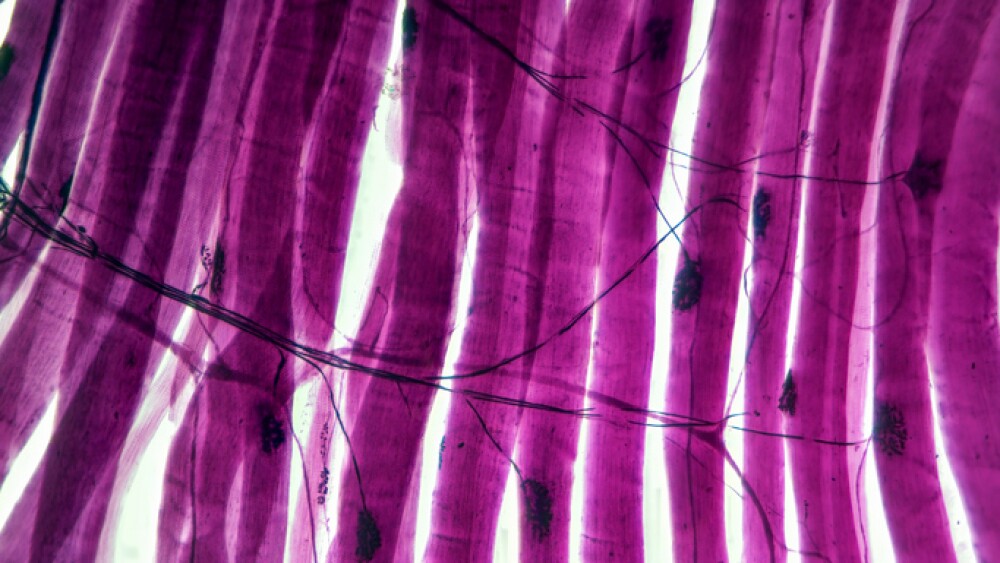Azura Ophthalmics Ltd., a clinical-stage biopharmaceutical company developing a new therapeutic class of Ophthalmic Keratolytics for ocular surface diseases, today announced multiple presentations featuring positive efficacy and safety data from a Phase 2b study of the company’s lead drug candidate, AZR-MD-001, in Meibomian Gland Dysfunction (MGD).
-- Robust safety and efficacy data supports advancing AZR-MD-001 into Phase 3 clinical trials --
TEL AVIV, Israel--(BUSINESS WIRE)-- Azura Ophthalmics Ltd., a clinical-stage biopharmaceutical company developing a new therapeutic class of Ophthalmic Keratolytics for ocular surface diseases, today announced multiple presentations featuring positive efficacy and safety data from a Phase 2b study of the company’s lead drug candidate, AZR-MD-001, in Meibomian Gland Dysfunction (MGD). Data will be featured at the upcoming Annual Meetings for the Association for Research in Vision and Ophthalmology (ARVO), April 23-27 in New Orleans and the American Society of Cataract and Refractive Surgery (ASCRS), May 5-8 in San Diego.
“At Azura, we are addressing MGD in a completely new way and our mission is to bring relief to the countless patients who are burdened by it and associated ocular surface conditions,” said Marc Gleeson, Chief Executive Officer of Azura. “AZR-MD-001 is the first investigational medicine to achieve a positive sign and symptom outcome for Meibomian Gland Dysfunction. We are excited to present our data across multiple presentations at these prestigious conferences and we expect to advance AZR-MD-001 into a pivotal Phase 3 trial this year.”
“Meibomian Gland Dysfunction is a common yet not well-understood condition, despite it being a major contributor to adverse ocular effects including ocular surface dryness, pain, irritation, contact lens discomfort and reduced quality of vision,” said Preeya K. Gupta, M.D., Managing Director of Triangle Eye Consultants and investigator of the study. “Positive data presented at ARVO and ASCRS reinforce the potential of AZR-MD-001 as an entirely new approach to treatment and will highlight safety, tolerability and efficacy observed during the Phase 2b trial.”
Details for the poster presentations are as follows:
ARVO sessions:
Title: B0313: Nonclinical assessment of repeated dosing of AZR-MD-001 to the lower eyelid (Selenium Sulphide, SeS2, sterile ophthalmic ointment): A novel therapy being developed for meibomian gland dysfunction
Session Date & Time: April 23, 8:00-9:45 a.m. CT
Presenter: Limor Miara, Azura Ophthalmics
Location: Exhibit Hall
Title: B0328: AZR-MD-001 efficacy in improving tear film stability and its impact on associated symptoms of meibomian gland dysfunction in a Phase 2 trial
Session Date & Time: April 26, 10:30 a.m.-12:15 p.m. CT
Presenter: Fiona Stapleton, University of South Wales Medicine & Health
Location: Exhibit Hall
Title: B0026: AZR-MD-001 efficacy in resolving the signs and associated symptoms of meibomian gland dysfunction (MGD) in a Phase 2 trial: responder status analysis
Session Date & Time April 27, 10:30 a.m.-12:15 p.m. CT
Presenter: Lisa M. Nijm, M.D., J.D., Warrenville EyeCare & Lasik, University of Illinois Eye & Ear Infirmary
Location: Exhibit Hall
Title: B0072: AZR-MD-001 restores gland function and improves signs and ocular symptoms of Meibomian Gland Dysfunction (MGD)
Session Date & Time: April 27, 10:30 a.m.-12:15 p.m. CT
Presenter: Preeya K. Gupta, M.D., Triangle Eye Consultants, Tulane University
Location: Exhibit Hall
ASCRS sessions:
Title: AZR-MD-001 Efficacy in Resolving the Signs and Associated Symptoms of Meibomian Gland Dysfunction (MGD): Phase 2 Trial Responder Status
Session Date & Time: May 7, 10:05-10:10 a.m. PT
Presenter: Lisa M. Nijm, M.D., J.D., Jennifer P Craig, O.D., Ph.D.
Location: SDCC – Upper Level, Room 4
Title: AZR-MD-001 Efficacy in Restoring Gland Function and Improving Signs and Ocular Symptoms of Meibomian Gland Dysfunction (MGD): A Phase 2 Trial
Session Date & Time: May 7, 10:55-11:00 a.m. PT
Presenter: Preeya K. Gupta, M.D.
Location: SDCC – Upper Level, Room 4
About Meibomian Gland Dysfunction
Meibomian Gland Dysfunction is a chronic and progressive condition associated with blockage of the meibomian glands and alteration in the quality of expressed meibum which can end in gland atrophy. It is the leading cause of Dry Eye Disease and Contact Lens Discomfort. MGD is commonly characterized by terminal duct obstruction and/or qualitative/quantitative changes in the glandular secretion. There are no approved prescription pharmaceutical agents that specifically treat these glandular changes. If left untreated, MGD will alter the tear film, which can initiate or exacerbate additional ocular surface diseases such as Dry Eye Disease, resulting in corneal ulcers and ocular infections. Approximately 30-40 million people are diagnosed with MGD in the United States1,2, with the total prevalent population estimated at 100 million Americans.
About AZR-MD-001
Azura’s lead clinical-stage drug candidate, AZR-MD-001, harnesses the power of selenium sulfide (SeS2) in an easy-to-use ophthalmic ointment preparation applied directly to the meibomian glands in the lower eyelid. AZR-MD-001 is thought to have a multi-modal mechanism of action that treats the pathophysiology of Meibomian Gland Dysfunction along with the resulting ocular surface symptoms. It breaks down the bonds between abnormal keratin proteins to soften the blockage, slows down the production of keratin to prevent future blockages and increases the quality and quantity of meibum produced by the meibomian glands.
AZR-MD-001 is currently being studied to evaluate the safety, efficacy, and tolerability of the study drug in patients with MGD. Azura expects to initiate a second pivotal multi-center clinical trial of AZR-MD-001 0.5% in 2023.
About Azura Ophthalmics, Ltd.
Azura Ophthalmics is utilizing our deep understanding of ocular surface diseases and drug development to deliver a new therapeutic class of Ophthalmic Keratolytics to treat underserved ophthalmic conditions. Our differentiated approach combines ophthalmologic and dermatologic solutions to harness the unique properties of keratolytics to treat the root cause of numerous underserved ocular indications. Our internally discovered pipeline of new chemical entities allows us to develop a portfolio of first-in-class ophthalmic therapeutics for significant unmet needs. For more information visit: www.azuraophthalmics.com and follow Azura on LinkedIn and Twitter.
References:
1. Milner, M. S., Beckman, K. A., Luchs, J. I., Allen, Q. B., Awdeh, R. M., Berdahl, J., Boland, T. S., Buznego, C., Gira, J. P., Goldberg, D. F., Goldman, D., Goyal, R. K., Jackson, M. A., Katz, J., Kim, T., Majmudar, P. A., Malhotra, R. P., McDonald, M. B., Rajpal, R. K., Raviv, T., … Yeu, E. (2017). Dysfunctional tear syndrome: dry eye disease and associated tear film disorders – new strategies for diagnosis and treatment. Current opinion in ophthalmology, 27 Suppl 1(Suppl 1), 3–47. https://doi.org/10.1097/01.icu.0000512373.81749.b7.
2. Foulks GN, Bran AJ. Meibomian gland dysfunction: a clinical scheme for description, diagnosis, classification, and grading. Ocul Surf. 2003;1:107-126.
View source version on businesswire.com: https://www.businesswire.com/news/home/20230420005240/en/
Source: Azura Ophthalmics Ltd.





